As the ugly 2016 U.S. presidential campaign finally comes to an end, there appears to be one positive story—the staggeringly high level of youth participation during the primaries. American youth, who tend to vote at the lowest rates of any age group during national elections, came out in droves during the 2016 primaries. While 2008 was dubbed “the year of the youth” for the unprecedented youth participation in that election, youth turnout in this election’s party primaries has so far surpassed 2008 levels in many states. But on Tuesday we are unlikely to see that enthusiasm in the national election.
During the Republican contests, youth broke participation records almost everywhere, tripling 2008 numbers in some states. And in the Democratic primaries, youth were instrumental in Bernie Sanders’ staying power. During the primaries, Sanders secured more youth votes (about 2 million) than all other Republican and Democratic candidates combined. This should not be surprising. Sanders was by far the most vocal champion of youth-related issues (such as affordable college tuition and student loan debt) on the campaign trail.
But in Tuesday’s contest between Hillary Clinton and Donald Trump—neither of whom has wide youth support—youth participation rates might fall back to pre-2008 levels. Only 32 percent of millennials report that they feel that “people like them” have a legitimate voice in the election. And in one poll, nearly a third of Sanders supporters said they would sit out the vote.
America is not alone
Half a century ago, the United States stood out for its low voter turnout rates, particularly among the youngest voters. In 1972, 53 percent of Americans under 30 voted, compared to 71 percent of those age 45 to 64. Yet during the 1960s and 1970s, most advanced industrialized democracies reported youth voter turnout rates in the 80 to 90 percent range. Today, however, many democracies have seen a dramatic drop-off in youth turnout. In Great Britain, for example, youth turnout in parliamentary elections fell from 82 percent in 1974 to 39 percent in 2001. And in Japan, youth turnout in parliamentary elections fell from 81 percent in 1967 to 36 percent in 2003.
In one of the globe’s newest democracies, Tunisia, we see similarly low levels of youth participation. Tunisian youth, who were responsible for bringing about a revolution in 2011, have increasingly abstained from voting and other formal politics. In 2014—only the country’s second free and fair election in its history—some estimated that 80 percent of eligible Tunisian voters age 18 to 25 boycotted the vote.
The parallels between 2014 Tunisia and 2016 America are numerous. In both contests, young voters were faced with two older candidates—including one old guard and one promising to shake things up—neither of whom has been able to convincingly address youth issues. Tunisia’s deep and painful (although improving) Islamist-secularist divide is not all that different from the growing chasm between left-wing and right-wing Americans.
Additionally, in both countries, young people are politically engaged and interested—but are increasingly choosing to channel their interests through informal, rather than formal mechanisms. According to my research on Tunisia, young people tend to choose informal ways of engaging in politics, such as attending a protest or joining a civil society group, for multiple reasons. Informal mechanism are an easier entrée than formal politics, civil society groups tend to be better respected than political parties, and, most importantly, informal political action both appeals to and addresses youth issues, while formal politics tends to either ignore or take advantage of young people. Thus, many of the same Tunisian youth who boycotted the 2014 election, for example, were active participants in campaigns and served as poll workers and election observers.
Young Americans, like Tunisians, are interested in politics and informally engaged—particularly through social media and through discussions with friends. Yet if the Tunisian case is instructive, knowledge of or interest in politics does not lead to high levels of youth voter turnout. Take, for example, the enthusiastic young Sanders supporters, many of whom were active during his campaign but who have not transferred their support to either Clinton or Trump.
When young people don’t vote, they hurt us all
Regardless of age, Americans should care whether young people vote. Low youth participation is bad for democracy on multiple levels. First, it hurts the interests of the young people themselves. Politicians are rational actors. If they know that young people do not tend to vote in large numbers, they will be less likely to enact legislation or take on issues that are important to young people.
[M]ore than any other demographic, young people are punching below their weight when it comes to the ballot box.
Second, when a significant percentage of the population sits out an election, it challenges the basic premise of our democracy—a government by, for, and of all of the people. Studies on voting rates in the United States have shown that the gap between young and old voters is consistently larger than any other voting gap—between races, education levels, or socioeconomic groups. This suggests that, more than any other demographic, young people are punching below their weight when it comes to the ballot box.
Third, voting has the potential to increase civic engagement writ large. Political engagement is a virtuous cycle. Being more politically active leads to greater political awareness, which leads to greater civil engagement, and so on.
Finally, voting is a habitual behavior: those who vote tend to keep doing so, and those who don’t tend to continually refrain from doing so. When President Kennedy led the charge to lower the voting age from 21 to 18, he did so out of fear that if young people had to wait until age 21 to vote they might never develop the voting habit. Unfortunately, merely granting 18 to 20 year-olds that right was apparently insufficient to start their voting habit, as youth voting has consistently been lower than any other age group.
With great power comes great responsibility
Like Tunisian youth, America’s young people have the potential to have a strong impact on their national politics. 2016 is the first year in which nearly all millennial youth will be eligible to vote—and the size of their voting bloc is now about equal to that of the baby boomer generation. But that influence will only be felt if young people choose to wield it—by casting their ballots on Tuesday.
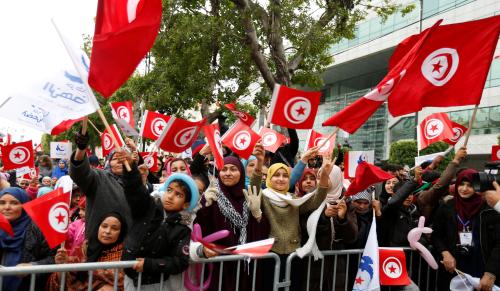
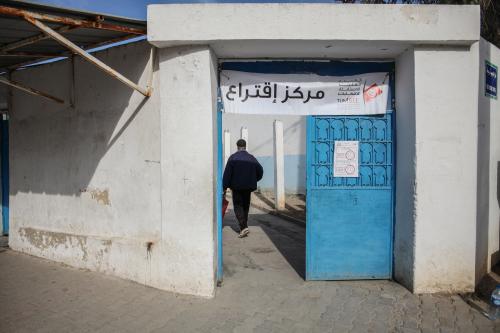
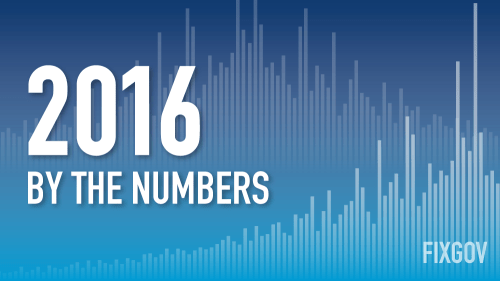
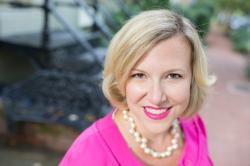


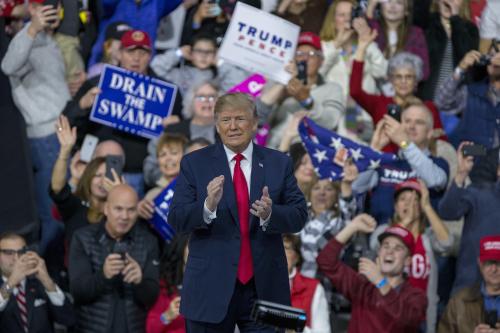
Commentary
Youth voting: What a new democracy can teach us about an old one
November 6, 2016